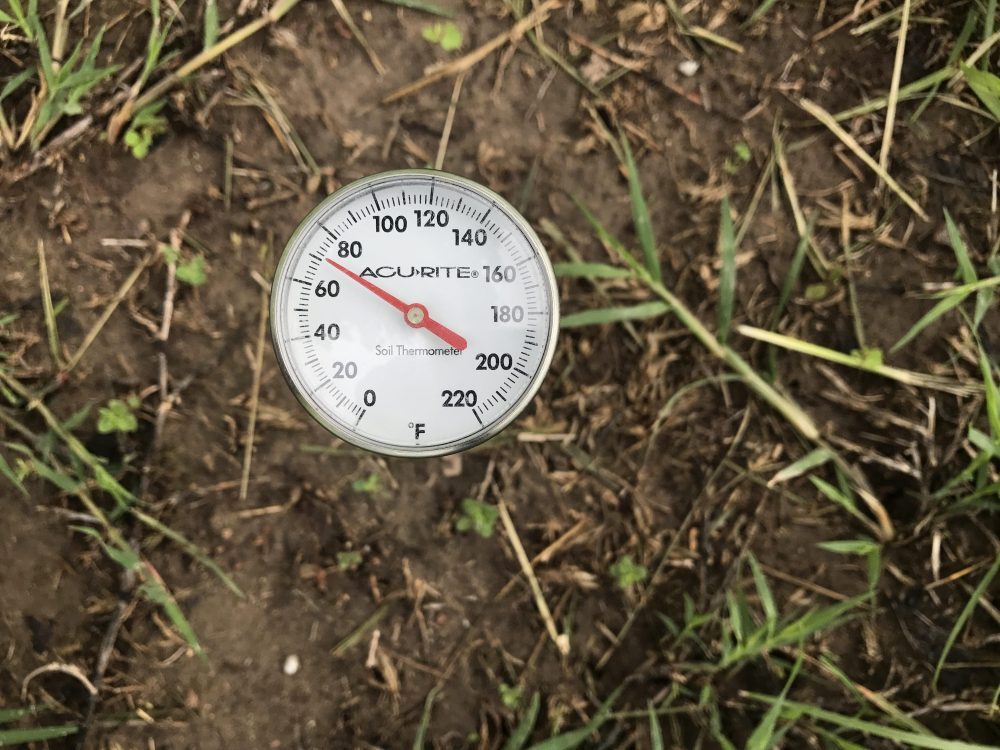Tip for Food Plot Success: Wait On Warmer Soil
Filed under: Food Plots, Hunting Blog
It’s been raining or snowing throughout much of the whitetail’s range recently. This unusually cold, wet spring has affected not only the turkey hunting, but also delayed our spring food plots. These same conditions of being too cold and wet extend across much of the country.
Most crops that are planted this time of year have a relatively large and soft seed, such as Eagle Seed forage soybeans, corn, sunflowers, etc. These soft, large seeds easily absorb water as part of their germination process. They also need water to break dormancy yet also require a minimal temperature to begin the germination process combined with a higher temperature to stimulate and increase the rate of germination and development.
Cold water (without an increase in soil temperature) will often result in the seeds swelling but not germinating or germinating and dying. The longer a seed, especially a relatively soft seed, remains in the soil without germinating there are more chances for insects, diseases, or fungus to attack.
The result of delayed germination of soft seeds is almost always a reduced seed and/or plant vigor. It’s common for 50% or more of large soft seeds that are planted during bad conditions (especially when it’s too cold and wet) to die in the ground before they germinate. The surviving seeds can have reduced vitality even as a maturing plant (like a fawn that received poor nutrition during development or the first few months of life).

The first tip to ensure that you have a successful food plot crop is to plant when the soil temperature is within the correct range for your seed. For example, soybeans have the best germination rate when there’s adequate but not too much soil moisture and the soil temperature is a minimum of 60 degrees.
Soil scientists recommend testing the soil temperature at 9 am as this is usually the coldest time of day at 2” deep in the soil. The soil cools all night and begins to warm once the sun is at an angle that its radiant heat impacts the soil.
One of the best tools to ensure a successful crop is a soil thermometer or checking one of the many soil temperature websites. I use a soil thermometer (usually about $10 at most feed and seed stores) as soil cover, color of soil, soil moisture etc., all can affect the soil temperature substantially from field to field.
If you’re planting food plots soon, don’t count on going by traditional or published planting dates. For the best chance of success plant when the local conditions are appropriate with soil temperature and enough moisture to ensure germination and growth.
As we’ve all seen recently it’s vitally important to keep an eye on the extended weather forecast!
Planting food plots and enjoying creation,
Grant



